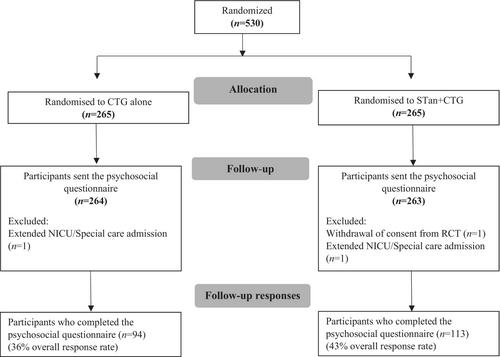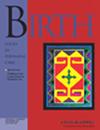In an Australian randomized controlled trial (RCT), two techniques for intrapartum fetal surveillance were compared: ST analysis (STan) as an adjunct to cardiotocography (CTG), compared with CTG alone. The aim was to determine whether CTG + STan could reduce emergency cesarean birth rates while maintaining or improving neonatal outcomes. Secondary aims were to compare clinical, economic, and psychosocial outcomes. The purpose of this paper was to present psychosocial outcomes from one cohort enrolled in the trial.
The study was conducted at one tertiary referral hospital. Participants who had taken part in the trial from the outset were invited to complete a questionnaire between March 2018 and January 2020, approximately 8 weeks after giving birth. Outcomes included depression, psychological distress, health-related quality of life, and infant feeding practices. Analysis was by intention to treat.
N = 207/527 participants completed the questionnaire (n = 113, STan; n = 94, CTG alone). Overall, no statistically significant or clinically meaningful differences were found in the two groups for symptoms of depression, psychological distress, quality of life, or infant feeding. A statistically significant difference was observed for the subscale of pain-discomfort, where scores were higher on average in the CTG alone arm relative to that in the CTG + STan arm.
Although STan as an adjunct to CTG constitutes a different clinical technology from CTG alone, both monitoring types appeared to produce similar results in terms of postnatal psychosocial outcomes for women. Findings from this study provide service users and staff with a comprehensive assessment of STan that can be used to make evidence-informed decisions about monitoring options should STan become more widely available.



